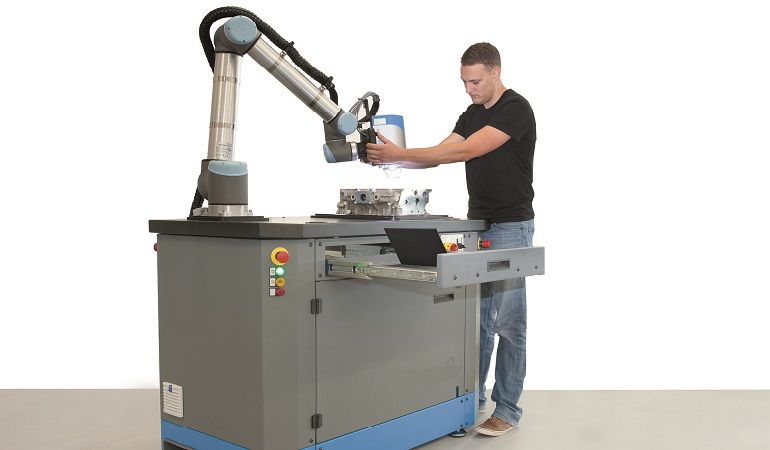The cobot concept was born as part of a project for research many years ago. The concept was to make robots safe enough to work side by side with humans. More than twenty years later, cobots have become commonplace in most factories, and in many people’s radar. The interesting thing is that people still do not understand the differences between cobots and robots.
Partners in Human and Machine Teams
Industrial robots are robots that work by following a fixed routine, regardless of who is around them. They normally work within cages and fences. One has to switch off the industrial robotic arm of the robot if entering the cage to minimize injury.
Cobots and humans work together in a shared workspace. Cobots are not caged and they work in a co-operative work environment. They assist humans in carrying out complicated tasks that are non-automatable. As an example, they can hand over some components to humans who can carry out different tasks.
Cobots, in comparison to their human counterparts, are capable of performing tasks with very complex accuracy and consistency. A cobot, for example, can carry out accuracies of up to 0.1mm.
Complex Tasks
Cobots carry out tasks that are too complex for humans, such as transport of sharp or hot objects or any other work that could be potentially dangerous to humans. This means there are fewer accidents in the workplace and leaves technicians free to put their energy on other more creative work that involves thought processes.
Cobots, to reduce injuries and repetitive strain on humans do dull, dirty, and extremely repetitive jobs.
Smart Behavior
Cobots, by their very design, should work flawlessly with their human counterparts. They have highly sophisticated sensors that immobilize them when touched. This prevents any accidents from happening to people as they work with them. It is no longer necessary to have the robots behind fences or closed areas.
Easy to Program
Cobots are easy to program, unlike traditional industrial robots, which required special skills to program. Some cobot models can self-teach. For instance, a person can perform a task with the industrial robotic arm, and the cobot can them mimic the action automatically.
Cobots are flexible and take instructions without any coding, which means they can easily work in different departments for different tasks. Within half an hour, you can program the cobot and have it running within the next hour, and even do its first task.
Can Work Anywhere
Cobots are easily programmable and are easy to move around to different points of production. You can mount a cobot anywhere and on any surface- vertically, horizontally or even on a ceiling. They are light in weight and one person can easily lift one.
A cobot can work continuously for hours without a break, where its human counterpart has to take breaks in between. A cobot can work in place of a temporary employee, which also reduces the costs of operation.
Suitable for Small Scale Production
Companies with a larger production volume opt for robotics solutions. Smaller sized companies use manual labor to save on costs. Cobots have changed this because they do not need a complex process for set up. They are also very flexible and easily available for various purposes such as sanding, cutting, lifting, shaping and packaging- perfect for a small industry,
Increased ROI (Return on Investment)
After cobots are installed, there is more production, flexibility, efficiency and more production, thus a faster ROI is ensured. Since cobots can be placed or relocated anywhere, this means the cobot is constantly being productive, which increases ROI. Profit margins rise when maintenance and labor costs are reduced.
Conclusion
Cobots have changed how industries do business. They are easily programed, have higher accuracy and can do repetitive and dangerous jobs that humans cannot do.
Cobots are here to stay. They will completely revolutionize the industrial sector by increasing production and return on Investment. The fact that smaller sized companies can make use of cobots to increase production and reduce costs, it means cobots are well on their way to being an industrial necessity.
